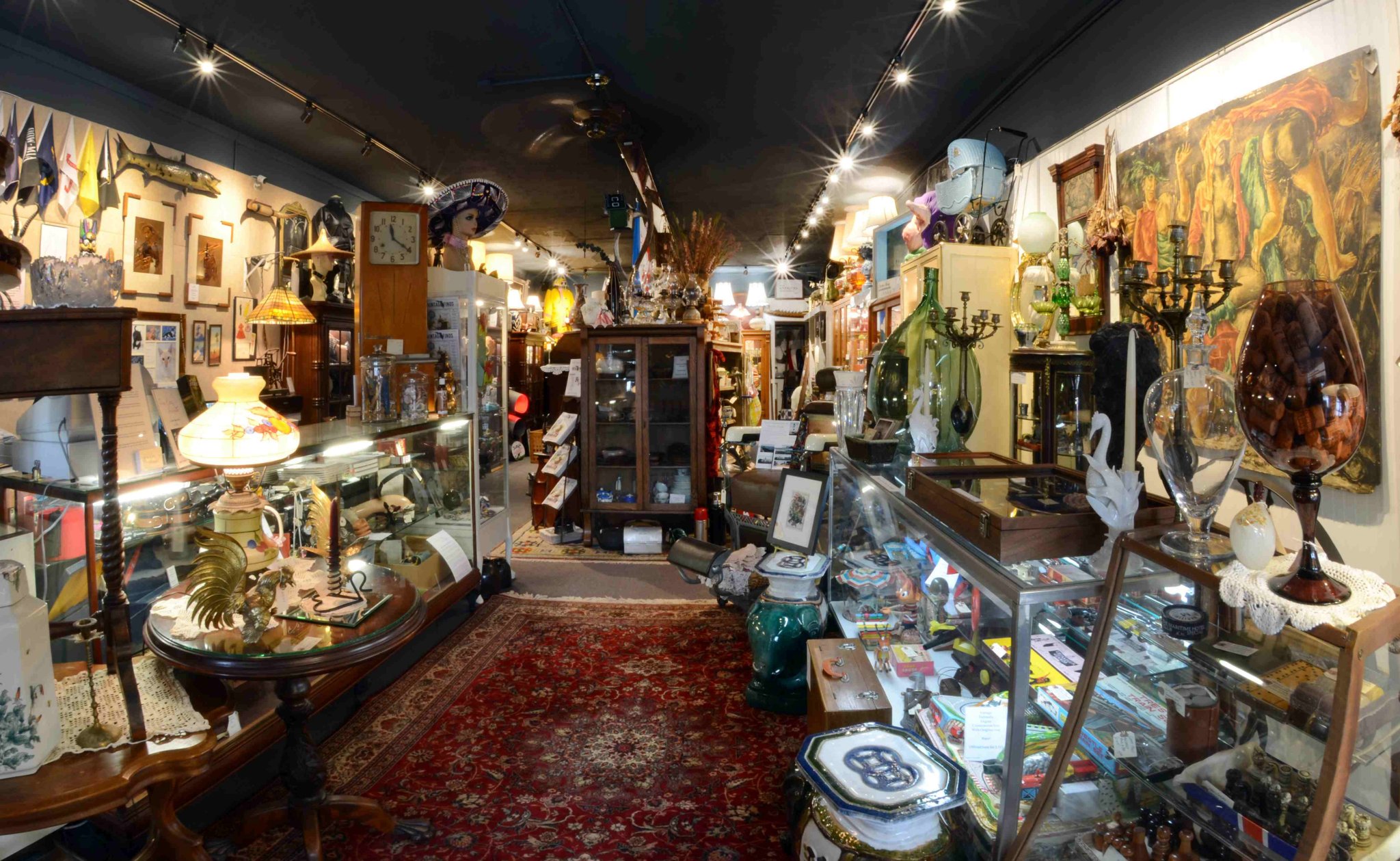Choosy mothers choose Jif©

Choosy moms choose Jif© – Remember that commercial? The basic takeaway was that if you didn’t buy your kids Jif Peanut Butter, you were a lousy mom who cared not for their kids. I am sort of like the “Choosy mom” in that I am picky and care about what I put into my antique store. (I love that I can add all these little © signs)
Unlike some other dealers who do entire house cleanouts, or buy items in “lots” (a large grouping of items bought en’ masse”), and then put everything in their store or booth, I try to be choosy when it comes picking pieces to buy and to offer to my customers and friends for sale in my antique store.
I myself have found my own path to this process. I have a store filled with treasures that range from glass eyes to an autopsy saw, to a vintage original Beatles Poster to fossils that are millions of years old, to antique time clocks and tin toys. I am asked nearly every day the same question, “Where do you find all this amazing stuff?!”
My answer ranges from, “I can’t tell you because then you will buy it all before I get there.” to “I can tell you where I don’t buy from: flea markets, estate sales, yard sales and thrift stores” People are always surprised by that answer as they assume that is where all antique dealers shop. Well, I am here to tell you, not this guy.
I have spent the last four years at Five Katz Antiques curating the collection of offerings much like a museum director curates the museum’s collection; by being choosy. This can be an agonizing process trying to figure out the best content for the store. I try to find the best items I can, for the best price I can, while at the same time trying to locate the most unusual and uncommon items. Then I try to offer those items to my clients at a price that still gives value to the client and allows me to make a modest profit on the item.
Sometimes being choosy and bringing a higher quality and scarcity of items has the unintended side effect of a slightly higher price to go with it. There are many things that go into the final price of an item offered for sale at Five Katz. I would like to tell you about the process.
First, you have to find the item, then you have to go see the item. Next you have to buy the item. Sometimes this is as straight forward as paying the asking price, and other times there can be a lengthy negotiation phase. Bringing the item back to the shop starts the next part of the process. Does the item need cleaned? Does it need repaired or touched up? Once it is cleaned, shined up and ready for display, you have to make room for the item in the store. Display skills have to be learned over many years. Merchandising an item is an important part of the process.
Once it is displayed properly, you have to research it. Is there a history to the item? What is this item or type of item selling for in other markets? Is it offered online? Then once this data is collected, a price can be established. Figure it right, and you win. Get it wrong and you lose. Price it too low, and it will sell too fast for too little money and profit suffers. Too high, and the item will sit on the shelf or in the store for too long. Every item in an antique store, is an investment of capital and until that capital is returned to the cash flow, new items can’t be added.
Other things factor into the pricing structure that are not as easily seen. Things such as credit card fees, liability insurance, utility bills, gasoline for travel, time away from home, vehicle mileage and more, all have an impact on the final price of any given item. There is no set formula, everyone has their own scale and process. There is no set markup on antiques like there is in other retail businesses. Basically, for lack of a better euphemism, much of it is “done by feel” and / or intuition.
There is an old joke in the antique business, “Buy high, sell low, and make it up in volume.” It doesn’t work. Just like other businesses, you have to make a profit to stay in business. Many people equate antique stores with thrift type stores, because the merchandise is pre-owned. The comparison couldn’t be more wrong. Many thrift stores thrive because all their inventory is donated to them, and many support charities, so the amount they make on each item can be less overall. In addition, their expenses in many instances are much less, with many using volunteers to offset costs further.
So, the next time you are in an antique store, take the time to look around. Really look around and take some time to appreciate all the hard work that has gone into acquiring and presenting everything to you. Don’t dismiss it with a quick run through as if you were doing a drive by at a yard sale. If you find something that speaks to you, buy it! This supports a local business in your community and it confirms to the owner that all the effort they put in was worth it as they see someone else get excited about a treasure, and it makes them want to keep being choosy.
See you at the store!
Originally published in Vintage Finds Magazine – July/August 2019 issue

